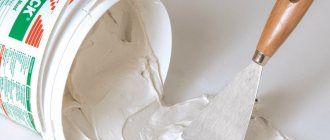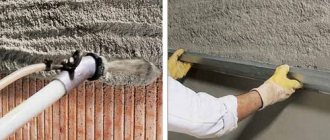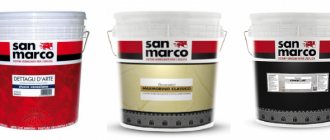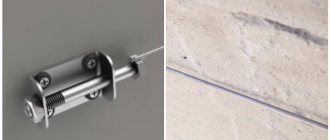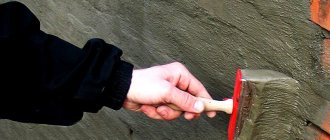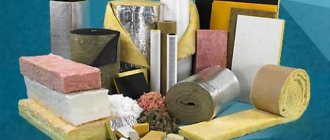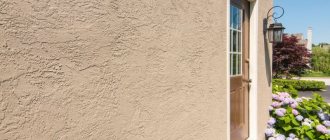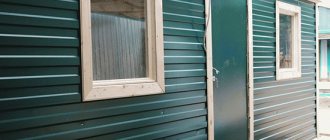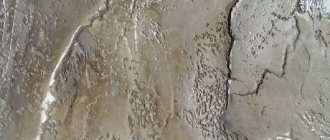Features and scope of application
Decorative mosaic plaster is a building mixture based on acrylic resin or other binder base with the addition of natural stone chips. Various rocks (marble, granite and others) are used as filler. In addition to crumbs, glazing pigments are added to the composition, giving the plaster the desired shade. The material may also include additional materials: lime, gypsum, silicates, silicone, latex, cement - which help it achieve the desired performance properties.
Mosaic plaster can include one or more types of rocks, and after hardening it turns into a coating with a relief surface and interspersed with multi-colored pebbles and transparent glass.
Most often, round-shaped elements of different sizes without sharp edges are used for its production, which eliminates unpleasant sensations during tactile contact.
This type of plaster is well suited for facades, plinths and other types of external structures, as well as for cladding internal walls, columns, frescoes, niches and other parts of the interior. Since the material is not afraid of ultraviolet radiation, it can be used to decorate multi-story buildings and office buildings: it will retain the brightness of the colors for many years.
Performing priming
All surfaces that need to be protected from plaster, such as window frames, must be covered with masking tape.
A durable and high-quality plaster coating can be obtained only with the correct use of a deeply penetrating primer in two layers. If the base part is to be painted, then only a façade primer with maximum drooping properties is used for processing. Only the use of high-quality materials and compliance with technological requirements for the preliminary preparation of the base for applying plaster can significantly increase the service life and improve the appearance.
Primer
Silicone quartz primer ST 15 Ceresit
If you plan to further perform decorative finishing work, then it is advisable to give preference to a façade adhesive or acrylic-based primer.
| Type of primer composition | Features and Specifications |
| Alkyd type, deep penetration | The composition is suitable for treating brick or concrete plinths previously covered with lime-based plaster mortars. |
| Deep penetration with water-repellent effect | Best suited for brick plinths on precast foundations and provides additional waterproofing. |
| Primer for painting | The composition promotes uniform distribution of the coloring composition and can be represented by either an acrylic or a water base. |
Primer for decorative plasters
Primer of the base
Advantages and disadvantages
Plaster based on natural stone has many advantages:
- resistance to temperature changes, moisture, precipitation, wind, chemicals;
- the ability to wash the coating, including with water under pressure and solutions with detergents;
- vapor permeability, no harmful effect on the microclimate in the house, no accumulation of moisture under the coating and the proliferation of fungus and mold;
- long service life while maintaining an attractive appearance;
- versatility: suitability for surfaces made of stone, brick, cement, concrete, plasterboard, starting plaster;
- a large assortment of factions, colors, bases, the ability to create a unique interior, matching different styles;
- concealment of foundation defects: cracks, unevenness, other defects;
- high ductility and elasticity, the ability to withstand shrinkage and even small earthquakes without damage;
- resistance to mechanical stress, absence of scratches and chips even after long-term use;
- ease of installation, the ability to create conventional finishing and various artistic elements;
- seamlessness, the formation of a monolithic surface without joints.
The cost of the material is quite high, this is its main drawback. Resin-based mosaic plaster is not applied to walls insulated with mineral or glass wool - you will have to choose a different finishing material or change the insulation.
Dismantling the coating is difficult, so if you want to radically change the interior, you will have to work hard.
Basic application rules
Mixing plaster
This material is already sold as a mixture in plastic buckets or containers. Immediately before use, their contents should be mixed very thoroughly. A mixer is ideal for this procedure. As with many products, this happens, some products from different batches may differ in production on the same day. This is due to the fact that natural mineral chips are used in production, so individual batches may differ in color. When purchasing several packages, it is advisable to pay attention to the serial number, which will show whether these goods were produced in the same batch. If the mass was produced on different days or even months, in order to protect yourself from color differences in the plaster, the entire purchased mass must be poured into one large container and mixed thoroughly.
The resulting mixture must be used according to the conditions and rules specified in the technical data sheet of the product. It is better to carefully monitor to ensure that the process runs smoothly. You also need to constantly ensure that the fresh mass, already applied to the walls, under no circumstances comes into contact with the one that has dried - this is where the difficulty of application lies. Otherwise, the place of their joints and connections will be noticeable.
Types of mosaic plaster
Depending on the area of application, plaster is divided into groups:
- for external work (facade);
- for interior work (decorative);
- universal.
In addition, the material is classified according to the size of the particles included in its composition, as well as the type of base and filler.
Diameter
Based on the diameter of the stone chips, mosaic plasters can be:
- coarse-grained (1.5–3 mm);
- mid-fractional (1.2–1.5 mm);
- fine-grained (0.9–1.2 mm);
- fine-textured (less than 0.9 mm).
Material
Various types of rocks can be used in the production of mosaic plaster. Each determines the appearance of the material, its physical properties and technical characteristics. The most popular are plasters based on marble, quartz, granite, malachite, lapis lazuli, onyx, so on the packaging you can see the mark “marble”, “quartz”, etc. There are also mixed materials on sale that contain several types of rocks at once.
Decorative marble plaster
Plasters also differ depending on the binder, being divided into the following types:
- Acrylic. The composition contains polymer acrylic resins, due to the presence of which the material acquires plasticity and resistance to impacts. Such plasters are easy to apply, inexpensive, and therefore very popular among finishers.
- Mineral. Based on lime, cement, gypsum. For external work, predominantly cement plasters with the addition of a small amount of lime are used, for internal work - gypsum plasters. All mineral mixtures are characterized by vapor permeability, high strength at low cost.
- Silicate. They contain potassium glass, adhere perfectly to the base, harden quickly, and take any shape. They have increased strength and wear resistance. The price of such plasters is an order of magnitude higher than that of mineral and acrylic plasters.
Decorative silicone plaster
- Silicone. These plasters contain artificial rubber (silicone resin). They are usually used for interior decoration due to their average resistance to mechanical damage. The products form a strong, elastic coating that is easy to clean and completely resistant to moisture.
General information
Types of plaster
Plastering is a very popular type of finishing of the base, as it does not require large expenses and at the same time looks quite stylish and presentable. In addition, a huge selection of plaster allows you to decorate the base with original textures and patterns.
The following types of plaster can be used for finishing:
- Silicone is the most expensive option, but the cost is justified by the high quality of the finish and its versatility. This plaster protects the surface from any negative environmental influences without losing its attractive appearance over time. In addition, you can create any colors by combining compositions of different colors.
- Cement-sand is the most budget option. Its advantages include high strength. To make the composition moisture resistant, special additives are added to it. This plaster is sold in the form of dry mixtures.
- Acrylic - great for decorating a base. It contains various resins that act as a binder. In addition, the mixture contains special additives that allow the surface to “breathe” and also make the finish moisture-resistant.
Acrylic plaster
Advantages
Modern compositions have many positive properties, among which are the following:
- Resistant to large temperature changes.
- Vapor permeability. Due to the fact that the compositions are capable of letting steam out, the house, as mentioned above, can “breathe.”
- Moisture resistance. Finishing the base with plaster can protect the base from precipitation, which gradually destroys the structure.
- Good sound and heat insulation. Finishing is an additional obstacle to the penetration of cold and extraneous sounds into the house. As a result, a comfortable and healthy microclimate is created in the room.
- The solution is easy to apply, so you can do the plastering yourself.
- Large selection of colors and textures. This will allow you to create unusual coatings with a beautiful texture and suitable colors.
- Affordable price of compositions.
Silicone plaster
Required Tools
To perform plastering work, you should purchase basic material in quantities corresponding to the dimensions of the room, as well as tools and consumables:
- grater and grater;
- trowel and spatulas of different sizes;
- textured rollers, stamps, stencils;
- masking tape;
- basic plaster;
- primer and brush;
- polyethylene.
Drying and finishing
After completing the finishing work, you should wait at least 48 hours for the mixture to dry naturally.
The product sets in about 12 hours. It is impossible to speed up the drying process using heating devices: this will only damage the finished surface. Radiators and heaters affecting the decorated wall should be turned off.
The surface of the wall is treated with varnish to give additional shine. This step can be avoided, since the varnish should be chosen strictly in accordance with the materials used: otherwise, chemical confrontation may occur. Experts apply the varnish using a roller.
Surface preparation
Mosaic plaster is capable of leveling out small defects in the base, but in general it should be as level as possible and not have large differences. The old coating is removed, cracks and holes are filled with starting plaster. It is better if the latter is white or another very light color, otherwise the rough coating may change the shade of the main finish. Check the evenness of the wall using a level or plumb line vertically, horizontally, and diagonally.
After leveling, priming is performed, the purpose of which is to increase the adhesion of the plaster to the base and lay the mixture more densely. The primer is applied in 2-3 layers at intervals of a couple of hours so that it has time to dry. The brush is carried out chaotically, forming a light ribbed relief. You can use a sand (quartz) primer with a shade close to the color of the plaster.
A few nuances.
The advantages that mosaic plaster has are accompanied by a number of points - they can be classified as disadvantages. So, it is quite expensive, which makes such finishing a rather expensive type of decoration. However, the costs are certainly justified by the long service life and good aesthetics.
In addition, its ability to pass steam, according to some experts, is not too high. This is confirmed by the manufacturers' instructions, which recommend not using this type of plaster where the walls of buildings are insulated using mineral wool slabs.
Technology and conditions of application to plinths and facades
External work requires careful adherence to the sequence of actions and taking into account the recommendations of specialists.
Environmental conditions
Late spring is the best time to apply plaster if the weather is dry. The maximum permissible humidity level is 60%. You cannot plaster facades or plinths in rain, snow, damp and cold weather, or in extreme heat. Ideal if the outside temperature is 22–25 degrees.
Rules for applying plaster
First, the finished plaster mixture is mixed well. If the composition is sold in dry form, dilute it with water, as indicated in the instructions, and beat with a construction mixer or drill with an appropriate attachment.
The solution is applied to the surface of the base or façade in patches using a spatula over a small area from corner to corner. Rub the mass with a trowel, holding the tool at a narrow angle, without strong pressure. Move the trowel vertically or chaotically, but not in a circular motion, without rubbing (preferably from the bottom up).
The second layer is applied without waiting, until the first one dries. They act in a similar way, forming a coating with a total thickness of 4–8 mm. Afterwards, take a grater and smooth the surface so that there are no voids left between the grains, and the wall becomes even and smooth.
There is no need to press hard on the grater, as this leads to the release of adhesive liquid and the appearance of stripes from the edges of the tool. To form the corners, wait until dry, then carefully process them with a grater. To dry, cover the plaster with plastic film for 3-4 days, then remove the film.
The solution is applied to the metal in the following sequence:
- Any pockets of corrosion are removed from the base.
- A special primer with anti-corrosion properties and a granular structure is applied.
- Plaster is applied in 2 thin layers (no more than 2–3 mm each).
If you plan to design a multi-colored facade, the borders of the color joints are first sealed with masking tape. Mosaic plaster of a certain shade is applied with an overlap on tape, and the protection is immediately removed after finishing the work. Then glue a new strip of tape onto the already treated base and begin applying the second shade of plaster. As a result, the junction of two colors will be smooth and beautiful. To create patterns on wet plaster, roll with a roller with stencils.
Features of the finishing of the base
The plinth acts as the lower belt of the facade. The beautiful finishing of this part transforms the structure and protects it from dirt and precipitation. Consistency and correctness of actions allows you to achieve maximum stability of the finish. It is better to apply plaster on dry, but not hot days, when the humidity does not exceed 70%. The optimal air temperature is 20–22 degrees.
Mosaic plaster for the base is applied to any base: lime, gypsum, brick, concrete, plasterboard. Before application, the surfaces are carefully leveled and primed.
Plaster mixtures are applied in a way called “wet on wet”, that is, they do not wait for the first layer to dry, but immediately apply the next one. If the coating dries, the joints will be visible. The layers must be strong and even, uniformity is achieved by applying the mixture in one direction. In the hands of a master, this process looks quite simple and efficient. If you have no experience, it is better to practice first. The slightest mistakes when applying the mixture will be visible, and correcting them will be problematic.
Using plaster indoors
Material with a small filler fraction is well suited for interior decoration. Most often it is used for offices, private houses, balconies, corridors. No less relevant is plaster for the kitchen in the area of the sink and apron. The mosaic coating looks great on corners and arches, and it also protects such places from damage.
Mosaic plaster is applied to well-leveled walls that have been thoroughly dried beforehand. A prerequisite is to prime the base with quartz primer of a neutral shade. Typically, only one layer of material is sufficient indoors. The work is done with a spatula and trowel in the standard manner.
After application, the mixture is ground with a grater or rolled with a roller, sponge, or rubbed with a trowel. To get an interesting decor, stick a stencil on the wall, fill the inside with plaster, level it and polish it. After complete drying, the stencil is removed.
Mixture consumption and damage restoration
Material consumption rates vary depending on the type of filler fraction. The approximate mass consumption per square meter of surface will be as follows:
- fraction 0.5–1 mm – 2–3 kg;
- fraction 1–1.5 mm – 3–4 kg;
- fraction 1.5–2 mm – 4–5.5 kg;
- fraction 2–3 mm – 5–7.5 kg.
Damage to the material occurs quite rarely due to its high strength. If this happens, you need to carefully remove the problem area, treat the chipped area with a primer and apply plaster of the same color, carefully rubbing the joint areas.
Material cost
The approximate price of the material is 120–150 rubles/kg. It can increase when expensive components are included in the composition, for example, natural marble chips or silicate composites. The cost of finishing a square meter of wall varies from 250 to 900 rubles or more.
Mosaic plaster has a number of features and has unique characteristics. It must be applied and dried correctly, and in this case the finished coating will be durable, pleasant to the touch and incredibly beautiful.


